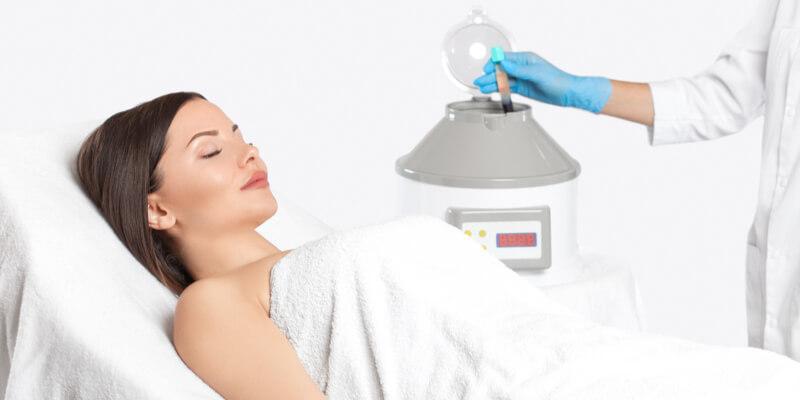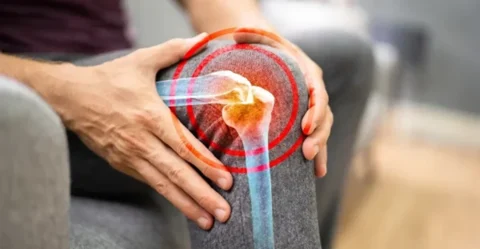The human blood is made up of plasma and elements such as the red blood cells, white blood cells, and the platelets. With the advancements in medicine, doctors have found a way to maximize the tissue healing properties of platelets in a practice known as platelet rich plasma treatment. Today, interest in PRP treatment is steadily increasing especially in the fields of sports medicine, dermatology, and cosmetics.
But what are the different classifications of PRP treatment? There are four identified platelet concentrates which are distinguished based on their leukocyte content and fibrin architecture namely: pure PRP, leukocyte and PRP (L-PRP), leukocyte and platelet-rich fibrin (L-PRF), and pure platelet-rich fibrin (P-PRF). These PRP and PRF types can differ in terms of their centrifugation speed which affects their final concentrated platelets sample.
The Basics of Autologous Platelet Rich Plasma Treatment
Platelets are an important component of the blood. They are rich in growth factor content which triggers coagulation or clotting to stop bleeding and boosts healing to repair damaged tissue cells. In platelet rich plasma therapy, a patient receives an injection of autologous platelets extracted from their own blood.
The determining factor for the success of the treatment is the high level of platelet concentration in a PRP sample. The number of platelets can make or break a PRP injection since growth factors and cell proteins are more abundant in a concentrated platelet product. Platelet poor plasma has little growth factor compounds and produces less efficient results for the therapy.
To prepare for PRP or PRF therapy, the first step is to extract a blood sample from the patient. This blood fluid is then transferred to a PRP tube before placing in a centrifuge device which will spin and separate the blood components into three different layers: red blood cells at the bottom, buffy coat layer at the middle, and plasma at the top.
The buffy coat has the ideal amount of high platelet concentrate. However, this also gathers a considerable white blood cell count in the layer. The sample can be spun for a second time (double spin buffy coat system) at a low speed to increase its concentration and further isolate the platelets from the white blood cells and red blood cells.
After centrifugation, the platelet-rich plasma product is mixed with an anticoagulant like sodium citrate to prevent the blood from clotting before being activated. The process of platelet activation allows for the release of the proteins that will initiate repairs of injured tissue and damaged cartilage, blood vessels, or soft tissue.
Comparing PRP vs PRF Types

PRP and PRF treatment both need a blood sample for the preparation of the serum. But depending on the type of therapy the patient will receive, the whole blood is centrifuged into different speeds to get the desired platelet concentration of the product.
Generally, PRP therapy is spun at a higher speed to separate the platelets from the white blood cells and stem cells. The topmost layer contains the platelet-rich plasma which is extracted from the tube and prepared according to the injection. The platelet yield for PRP products has a platelet concentrate which is five to seven times higher than the normal amount.
On the other hand, the PRF serum is produced from centrifuging the blood sample at a lower speed. With this process, the blood components do not separate entirely and more blood cells are kept in the final PRF product.
The white blood cells present in the PRF provide more benefits for wound healing and immune response. It is also blended with a fibrin matrix compound which holds more platelet growth factors and proteins to produce better and longer-lasting results.
Studies further classify PRP and PRF into different categories based on their preparation techniques and formulation for platelet activation:
- Pure Platelet-Rich Plasma or Pure PRP (P-PRP) – These are products extracted and centrifuged to completely remove white blood cells and have a low fibrin matrix. This is typically available for liquid injections or in topical gel forms.
- Leukocyte and Platelet-Rich Plasma (L-PRP) – These are products that maintain their leukocyte count but with a low fibrin matrix. It is similar to P-PRP where it is commercially available in liquid solutions or activated topical products.
- Pure Platelet-Rich Fibrin (P-PRF) – Also known as Leukocyte-Poor Platelet Rich Fibrin, these products have a high fibrin density but no white blood cells content. They are only available in gel products.
- Leukocyte and Platelet-Rich Fibrin (L-PRF) – These products both have leukocytes and high fibrin matrix. Because of the strong fibrin content, they can only be used in topical products and gel forms.
PRP and PRF can complement other regenerative therapies like stem cell therapy (uses stem cells from bone marrow) and platelet lysate (which is a more advanced treatment of PRP commonly used for spine problems). They can also supplement effects of steroid injections to minimize chronic pain and stimulate healing of tendon injury and joint pain.
Where Is PRP Used Today?
The amazing healing effects of PRF and PRP treatment are widely known across various medical and aesthetic practices today. Firstly, doctors engaged in sports medicine may administer a platelet rich plasma injection to athletes suffering from muscle injury, chronic tendon injuries, MCL tears, knee osteoarthritis, tennis elbow or inflammation of the tendons that connect forearm muscles to the elbow, and damage to Achilles tendon.
When PRP is administered to the affected area, it can effectively reduce pain caused by the injury, restore and enhance normal joint movement, and stimulate repair of the damaged tendon tissue. The growth factors in the PRP can also promote production of collagen to provide structural strength and support to the bone ligament.
PRF treatment is largely utilized in regenerative dentistry and endodontics. The PRF serum can promote total improvement to the oral health by helping to generate new bones and correct periodontal defects and provides antibacterial protection against cavities and infections. Likewise, certain dental procedures like extraction and dental implants may use PRF as filling material to facilitate wound healing.
PRP has also been proven to have rejuvenating effects for androgenetic alopecia or hair loss problems. Hair loss is often associated with genetics or vitamin deficiency. In these cases, the nutrients present in the platelet-rich plasma treatment can reinvigorate the cells in the hair follicle and encourage new hair to grow.
The treatment can show significant improvements in hair density and prevent further hair thinning. Patients may need at least 3 sessions of PRP and they can enjoy its desirable effects for up to 12 months.
PEP Factor: An Effective Alternative for Platelet Rich Plasma Injection
Not all practices may be fully ready and equipped with the best PRP system to prepare and offer injections of platelet rich plasma. Fortunately, the availability of PEP Factor products have made it possible for clinics to offer a viable alternative for scalp rejuvenation without the need for too much blood preparation and extraction.
A product of the latest innovation in cosmetics, PEP Factor products are specially formulated with bio proteins and copper peptides that influence the fibroblasts in the skin. It’s a natural alternative that may offer the same hair regrowth effects similar to PRP and PRF treatments.
PEP Factor is infused directly to the affected scalp area to deliver the compounds that may help increase the amount of collagen and elastin fibers to promote new hair growth. It is also available in topical product formulations to help strengthen hair roots and maintain good scalp health. Ideally, results from PEP Factor may be visible within 2 to 4 weeks.
The treatment may also be used in conjunction with PRP for hair rejuvenation to boost its effects and offer greater results. They may also be able to treat stage 5 hair loss since its proteins may penetrate deep into the scalp to give nutrients to the hair.
PEP Factor with hyaluronic acid formulation can also be offered to patients looking to revitalize their skin and facial appearance. Its nutrient properties may offer benefits such as skin hydration and collagen development to improve texture and smoothness of the skin. They may also be used to correct acne scars, minimize fine lines and wrinkles, and restore bright skin complexion.
Get PEP Factor and Other Face and Hair Rejuvenation Products from FACE Medical Supply
PRP and PRF therapy are both effective at treating and managing hair thinning problems. But with the continuous innovation in cosmetic medicine today, there has been an emergence of new solutions like PEP Factor products that offer a nonsurgical option that may also provide desirable results for hair loss and skin problems.
Here at FACE Medical Supply, we are dedicated to providing high quality medical tools and products for your practice’s cosmetic and wellness services. We strive to help clinics in the country to excel in the industry and continue providing the highest level of customer care and treatment. Contact us today to learn more about our wide range of products.






